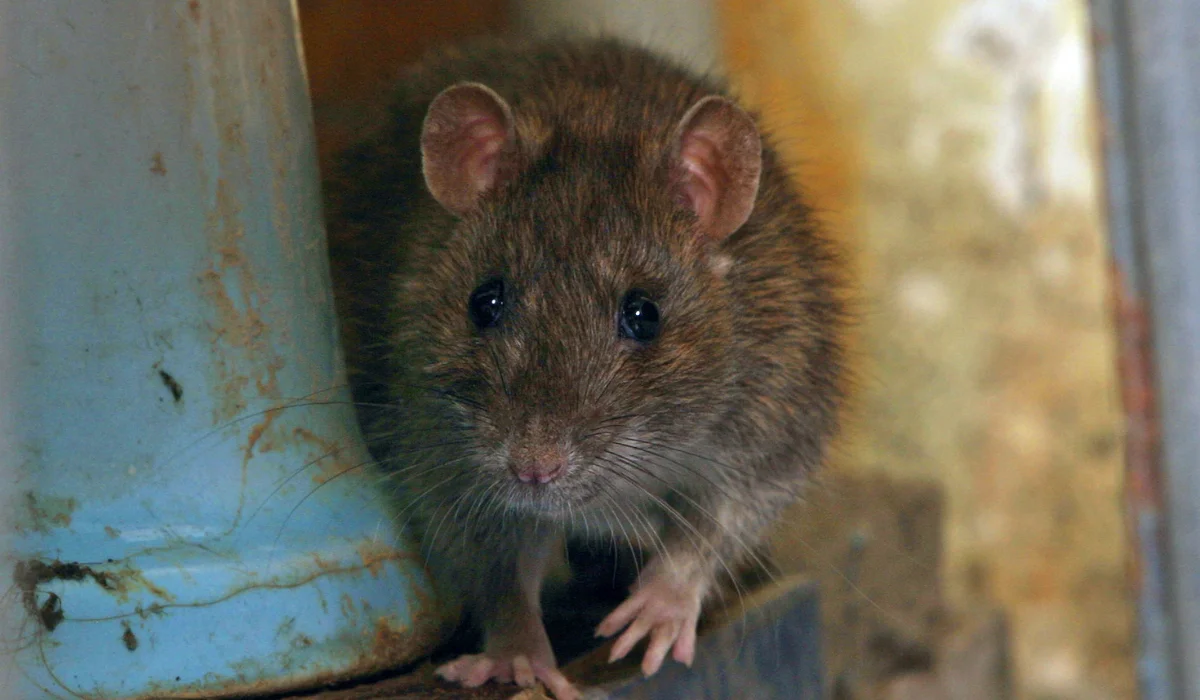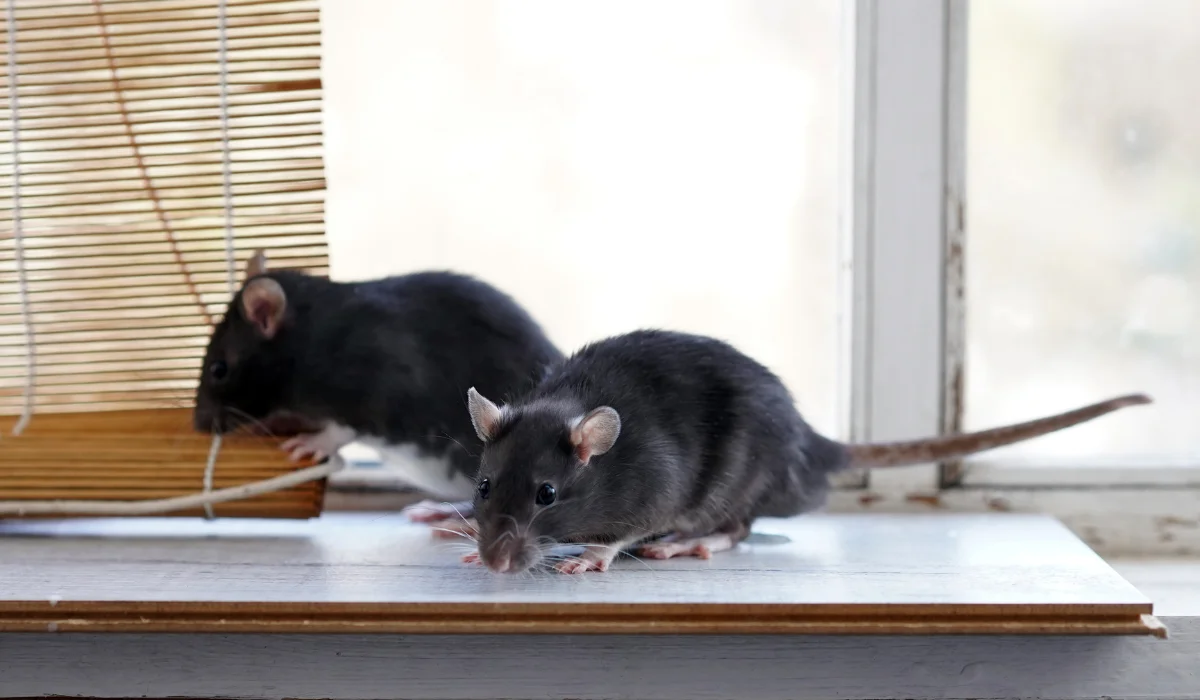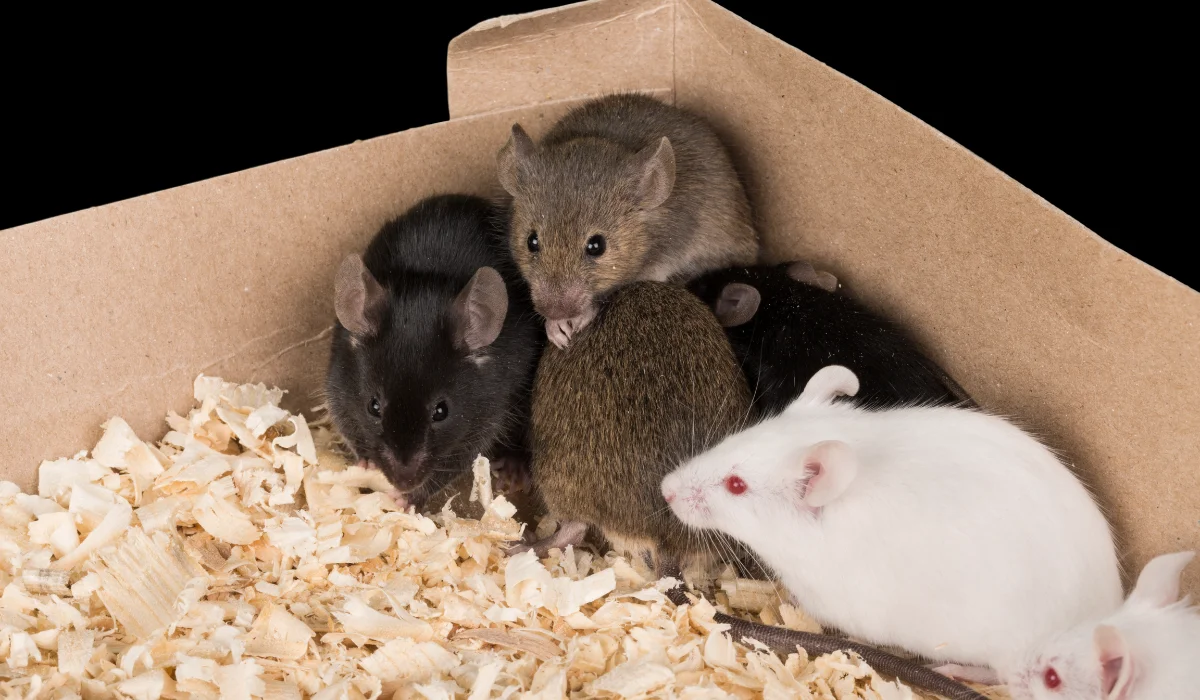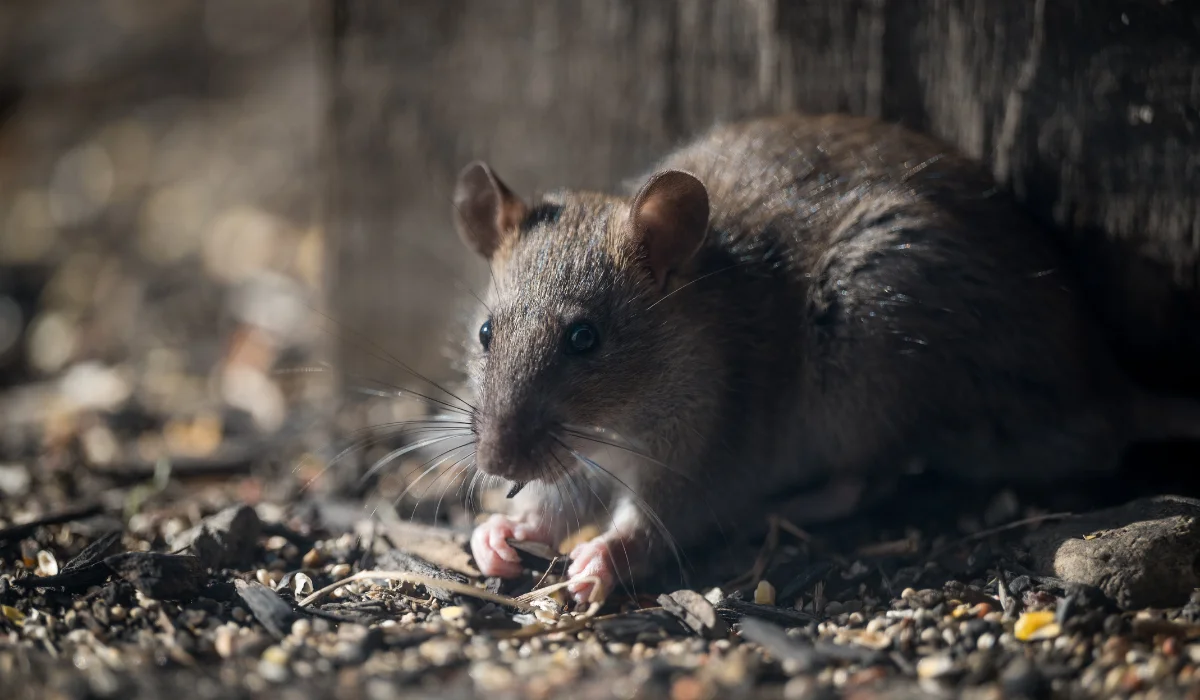Rats are a common sight in Louisiana, particularly the black rat and the Norway rat. While both species are major culprits in rat infestations, they differ significantly in appearance, habits, and the problems they cause. Understanding these differences can help homeowners identify the type of rats and implement effective control strategies.
Key Takeaways
- Black rats and Norway rats have distinct differences in size, behavior, and habitat, making identification key to solving rat problems.
- Both species are omnivores that spread serious diseases, contaminate food, and cause damage by chewing through materials.
- Common signs of a rat infestation include droppings, gnaw marks, strange odors, and scratching noises in attics or basements.
- Effective rat control involves inspection, exclusion, traps, baits, and sanitation, with professionals offering tailored solutions and guaranteed results.
BLACK RAT VS. NORWAY RAT: KEY DIFFERENCES
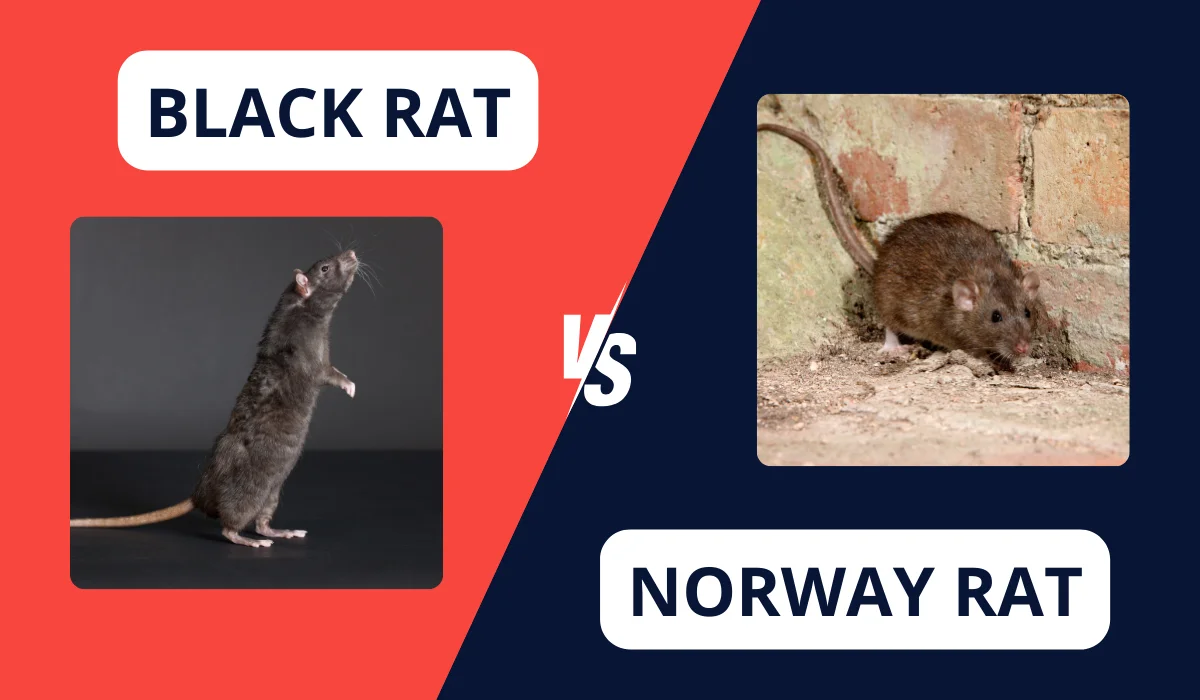
Rats may look similar at a glance, but black rats and Norway rats have distinct differences in appearance, behavior, and habitat.
Here’s a comparison to help you identify which rat species you might be dealing with:
| Feature | Black Rat | Norway Rat |
|---|---|---|
| Common Names | Roof rat, ship rat | Brown rat, sewer rat, common rat |
| Size | Smaller, 6–8 inches in body length | Larger, 7–9 inches in body length |
| Tail | Longer than the body, thin | Shorter than the body, thick |
| Ears | Large ears | Small ears |
| Habitat | High places (attics, trees) | Ground-level (basements, burrows) |
| Diet Preferences | Fruits, grains, nuts | Meat, trash, pet food |
| Behavior | Excellent climbers | Skilled swimmers |
WHY ARE BLACK AND NORWAY RATS DANGEROUS?
Rats aren’t just an annoying pest—they carry diseases that pose real health hazards.
Black rats, for example, are infamous for spreading diseases like typhus and carrying fleas that once transmitted the bubonic plague. Norway rats are no better, as they can spread leptospirosis, hantavirus, and salmonella.
To make matters worse, rats contaminate food and surfaces with their droppings and urine, which can quickly turn a small infestation into a big health risk.
SIGNS OF A RAT INFESTATION
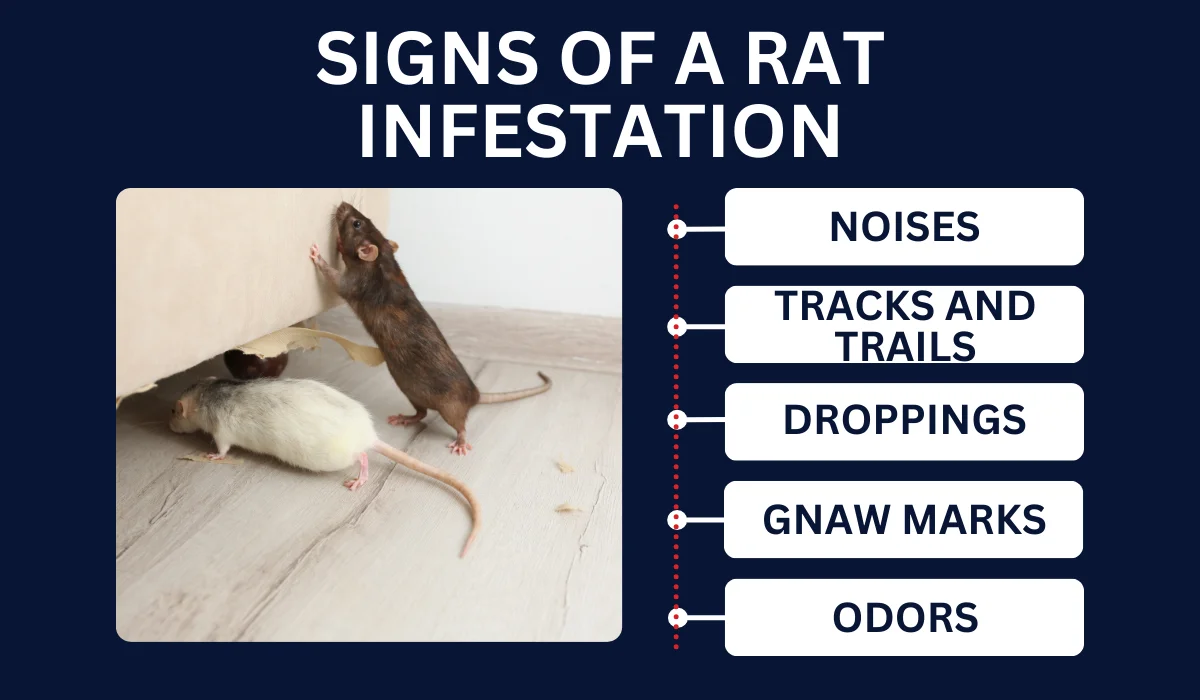
Detecting the signs of an infestation early is essential. Look for:
- Noises: Scratching sounds in the attic or walls may indicate black rats, while activity near basements or foundations often points to Norway rats.
- Tracks and Trails: Rats leave grease marks along walls and beams, especially in high-traffic areas.
- Droppings: Rat droppings are a surefire sign of activity. These feces are often found near food sources, nesting areas, or along their travel routes.
- Gnaw Marks: Rats gnaw on wood, plastic, wires, and even concrete to keep their teeth sharp. Chewed wiring is a serious fire hazard and a common sign of infestation.
- Odors: A strong, musty odor from urine or droppings may indicate a hidden infestation. This smell is especially noticeable in enclosed areas like cabinets or crawl spaces.
HOW TO GET RID OF BLACK AND NORWAY RATS
Dealing with a rat problem can feel overwhelming, but with the right steps, you can get it under control.
Here’s how to manage rat populations effectively:
Inspection
Start your rat control by looking for signs of activity like droppings, gnaw marks, or nests.
Black rats tend to stay in high places like attics, while Norway rats stick closer to the ground. Identifying their entry points and nesting spots helps you target the issue directly.
Exclusion
Once you know where they’re coming in, seal up those entry points!
Use durable materials like steel mesh to block gaps around pipes, cracks in walls, or holes near your foundation. Cutting off access will stop rats from making your home their nursery for future litter.
Traps and Baits
Match your trap and bait strategy to the type of rat:
- Black rats? Place traps in elevated areas like rafters or along beams.
- Norway rats? Set traps at ground level near walls or burrows. Use bait that appeals to these omnivores, like fruits or nuts for black rats and protein-rich foods for Norway rats.
Sanitation
A clean home makes it harder for rats to stick around.
Securely store food in airtight containers, take out the trash regularly, and clean up crumbs and spills right away. Removing clutter also helps by eliminating potential nesting materials.
WHY CHOOSE LAJAUNIE’S PEST CONTROL FOR RAT PROBLEMS?
At LaJaunie’s Pest Control, we provide tailored solutions for rat infestations in Louisiana.
Whether you’re dealing with roof rats in the attic or brown rats in the basement, our team offers:
- Same-day services for quick resolution.
- A guaranteed follow-up to ensure complete pest management.
- Expert advice on rat-proofing your home for long-term protection.
Don’t let rats take over your home. Contact us today for effective and reliable pest management.
| Feature | Black Rat | Norway Rat |
|---|---|---|
| Common Names | Roof rat, ship rat | Brown rat, sewer rat, common rat |
| Size | Smaller, 6–8 inches in body length | Larger, 7–9 inches in body length |
| Tail | Longer than the body, thin | Shorter than the body, thick |
| Ears | Large ears | Small ears |
| Habitat | High places (attics, trees) | Ground-level (basements, burrows) |
| Diet Preferences | Fruits, grains, nuts | Meat, trash, pet food |
 By: LaJaunie's Pest Control
By: LaJaunie's Pest Control 